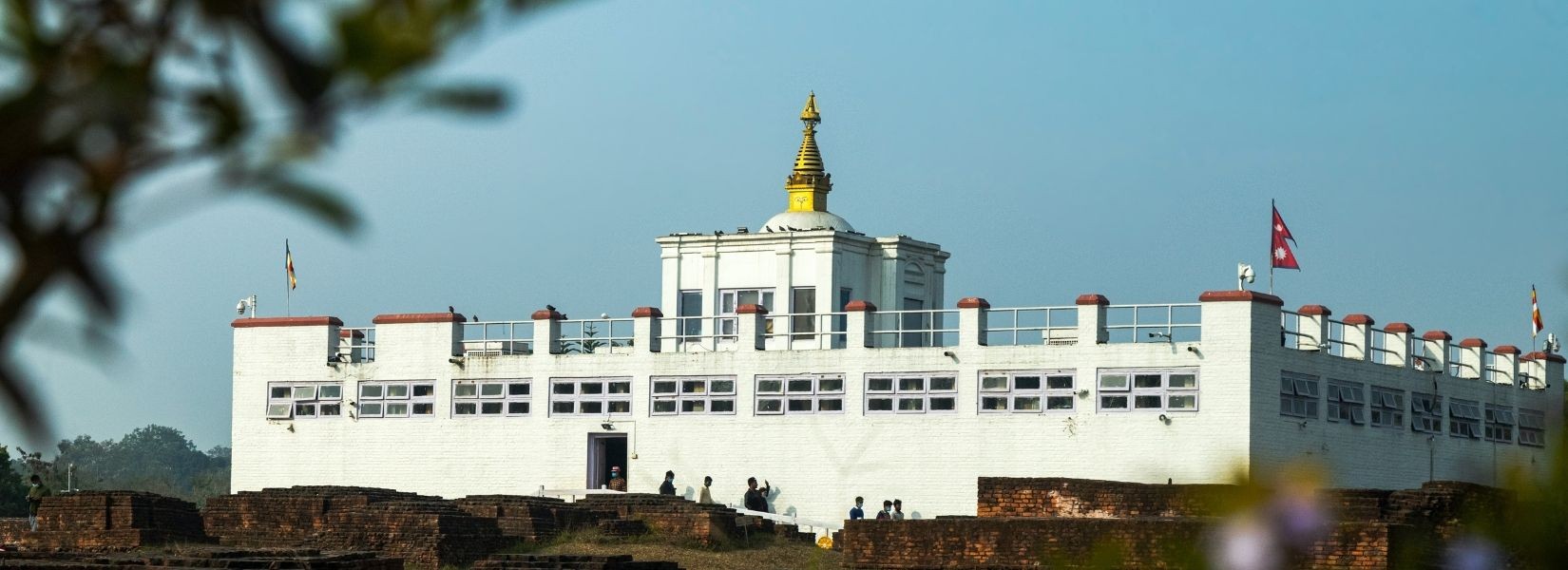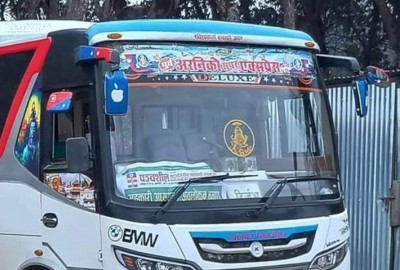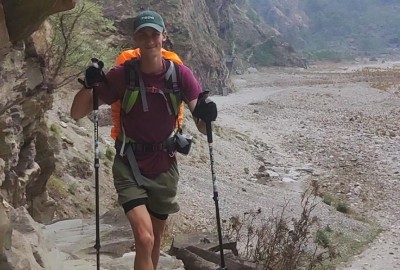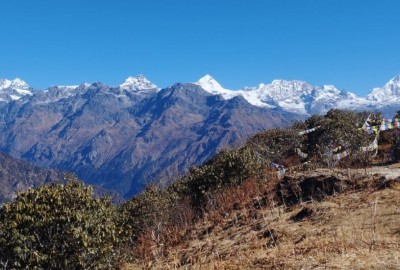History of Lumbini
Lumbini is most notably known to be the birthplace of the founder of Buddhism, Gautama Buddha, who was born there somewhere around the 6th or 7th century BC.
According to myths, in the year of 642 BC, while being on the way to her parent's house at Devadah, Maya Devi gave birth to the Siddharta Gautama (Buddha). Siddharta Gautama was born to Maya Devi who, feeling the assault of her labor pain grabbed onto the branches of a shade tree. According to one Buddhist myth, Buddha announced that it was his final rebirth as soon as he was born while another Buddhist myth claims that he walked seven steps as soon as he was born and that a lotus flower bloomed where he took each step.
Emperor Ashoka, the Buddhist convert, visited Lumbini in 249 BC. During his visit, he constructed a stone pillar and four stupas. In Ashoka's pillar, there is an inscription which roughly translates to, "King Piyadasi (Ashoka), beloved of devas, in the 20th year of the coronation, himself made a royal visit, Buddha Sakyamuni having been born here, a stone railing was built and a stone pillar erected to the blessed one having been born here. The village was reduced taxes and entitled to the eight-part only"
After the arrival of Islam and Hinduism, there was a decline in the influence of Buddhism so temples and monasteries were built only up till the 9th century. All that was left was a sculpture believed to be a symbol of fertility by a local woman. For a thousand years, the garden where Buddha's birth took place was lost.
When a German archaeologist stumbled upon Ashoka's pillar in 1895, there was a rediscovery of the site. The pillar was identified by its inscriptions.
The process of identifying the religiously revered site was helped by Fa Xian, the Chinese pilgrim who made records of it in his writings. In 1997, Lumbini was added to the list of world heritage sites by UNESCO.
Places to Visit in Lumbini
Lumbini is a large garden with an abundance of pipal trees as it is situated in the foothill plains that lie below the Himalayas. While many shrines and Buddhist temples are dispersed across the holy site by various nations, the area surrounding it is largely Hindu.
Here is a list of sites you must visit while in Lumbini:
Maya Devi Temple
Maya Devi Temple or the spiritual heart of Lumbini marks where Queen Maya Devi gave birth to Gautam Buddha. The ruins of stupas, Ashoka's pillar and monks assembled under the pipal tree with prayer flags decorated in it can be found in the sacred garden next to it. The entrance ticket can be bought fifty meters North of the sacred garden gate and shoes have to be left outside. Ruins dating back to at least 2200 years were found in the 1992 excavations. On a brick plinth, a memorialized stone was found in the excavations. The description of the stone matches the one placed by Emperor Ashoka during the 3rd century BC. A brick pavilion protects the ruins of the temple for now but plans to raise a monument on the site have been made.
The carving of the birth of Lord Buddha is the main point for the pilgrims, The carving, is said to have been left there in the 14th century by the Malla kings, Ripu Malla. Maya Devi was worshipped as the rebirth of the Hindu mother goddess. You can barely see the carvings of Maya Devi holding on to the tree branch while giving birth to Buddha with Brahma and Indra being the onlookers as most of it has been worn down by the worshipping. Pinpointing the place where Buddha was born is a marker stone enclosed in bulletproof glass.
Queen Maya Devi is said to have bathed in the pond next to the temple before giving birth. There are various stupas and monasteries scattered around the grounds which date back to the 2nd to 9th century AD.
World Peace Pagoda
The dazzling white World Peace Pagoda is easily accessible by bike as it is located outside the main compound. At the cost of US $1 million, the Japanese Buddhists built one of the world's greatest stupas. The assumed posture in which Buddha was born is depicted in the statue. There is also a grave near the stupa honoring the death of a Japanese monk murdered during the construction of the stupa by anti-Buddhist extremists.
Cambodian Monastery
This gorgeous monastery is filled with colors with touches of Angkor Wat present in it. It was finally finished in 2018. Four fifty meter long green snakes with intertwined tails are placed at the top of the corners of the square railing. The huge outer wall is decorated with exquisite designs.
Royal Thai Buddhist Monastery
Built with dazzling white marble, this gorgeous Thia-style monastery is near to the North end of the central pond. The architecture of the meditation center next door is also great.
Zhong Hua Chinese Buddhist Monastery
With the looks that reminds one of a forbidden city, this pagoda styled monastery can be reached by a gateway which is winged by the dogs of Fo. The internal courtyard is extremely well taken care of and is a small piece of heaven.
Myanmar Golden Temple
Regarded as the oldest structure in the compound, the Myanmar Golden Temple is an interesting piece of work. There are a total of three prayer halls. The corn cob shaped tower is the most impressive one. The inspiration for this came after the temples of Bagan. A gilded stupa inspired by Shwedagon Paya in Yangon, built in a Southern Burmese style is near the temple grounds. The gilded stupa is called Lokamani Pula Pagoda.
Lumbini Museum
A museum dedicated to the life of Buddha can be found in the Northern end of the compound. It has a collection of photos and artifacts collected from Buddhist sites around the world. A model of the plan for Lumbini's Development Zone can also be found there.
Ashoka's Pillar
After the rediscovery of the pillar in 1896 by the then governor of Palpa, Khadga Shumsher Rana, the pillar has been returned to where it came from. It is now situated in front of the Maya Devi temple. It is made from pink sandstone and is six meters tall.
How to get to Lumbini
Getting to Lumbini is not especially quick as it is located near the Indian border of Central-West Nepal. As this place is not easy to get to, the amount of visitors here is less. Tibet, Japan, and Southeast Asia are regions that contribute to the most pilgrims come from. However, Westerners visit often too and are frequent tourists in this region.
There is a small airport located in Lumbini. You can get tickets from domestic airlines such as Buddha Air. While air travel is the more expensive it also faster and more comfortable but, if you wish, you can still opt to travel through buses or cars. Contact us, if you need any help in planning the trip to Lumbini.








